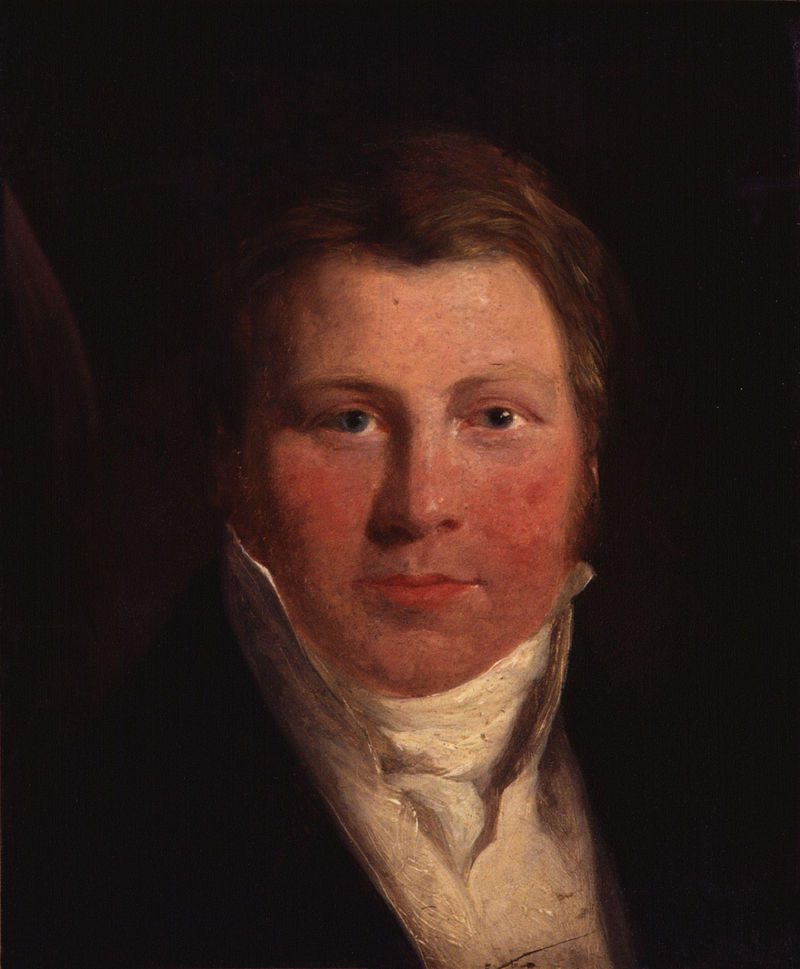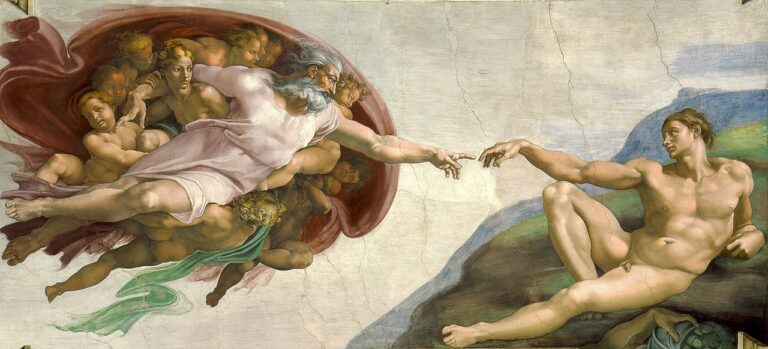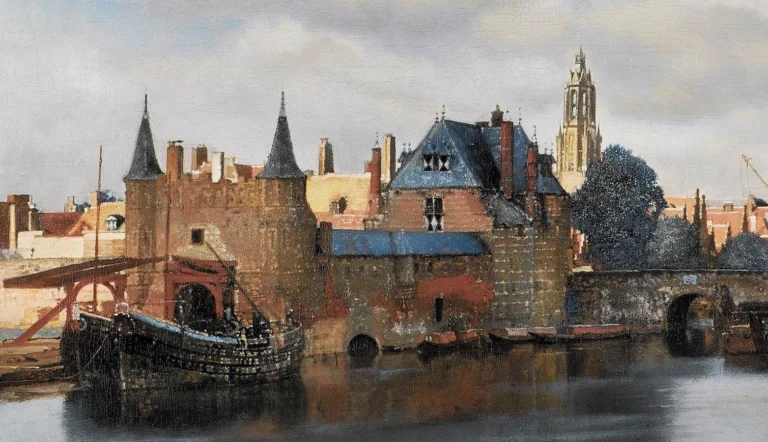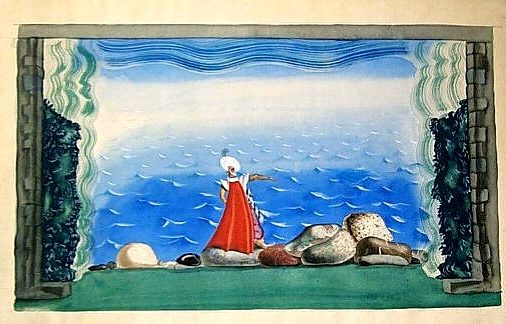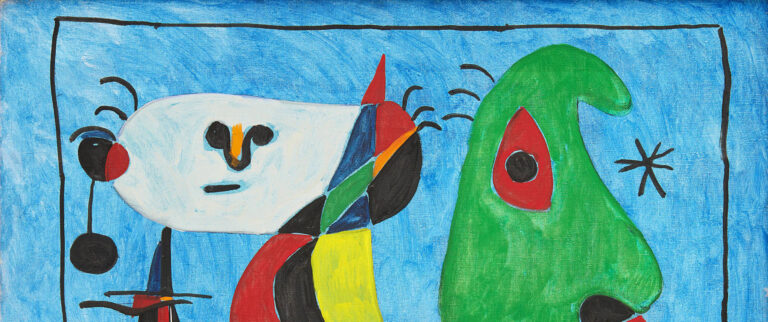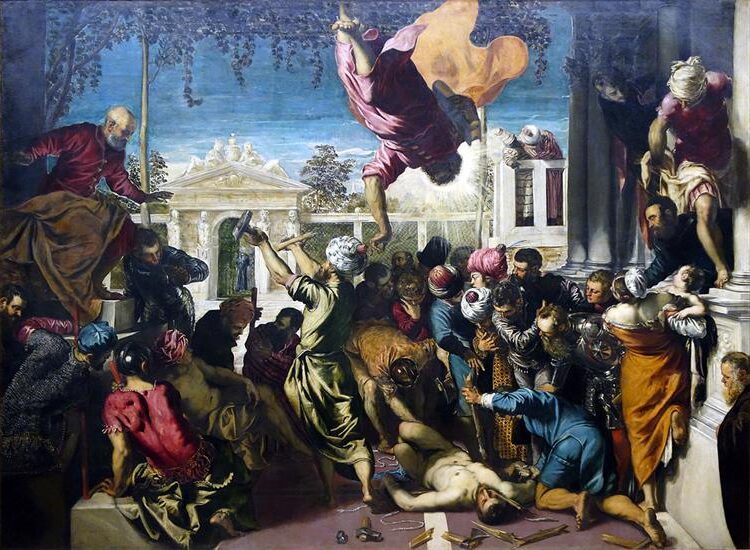John Varley Painter: Influential British Landscape Artist of the 18th Century
Born: 17 August 1778, Hackney, London
Death: 17 November 1842, Hackney, London
Art Movement: Romanticism
Nationality: British
Teacher: Joseph Charles Barrow
John Varley Painter: Influential British Landscape Artist of the 18th Century
Life and Career
John Varley was a prominent English watercolor painter. He lived from 1778 to 1842 and made significant contributions to early 19th-century art. He also influenced many younger artists.
Early Years in Hackney
John Varley was born on August 17, 1778, at the Old Blue Post Tavern in Hackney, London. His father, Richard Varley, came from Lincolnshire and settled in London after his first wife died. John’s mother was said to be related to Oliver Cromwell.
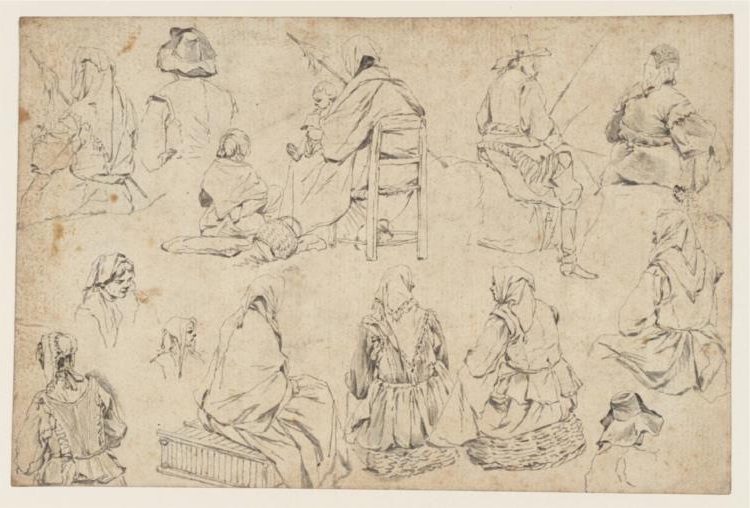
Studies of Peasant Women, and a Horseman by John Varley
Varley grew up with his brothers, including Cornelius, who also became an artist. As a young man, John started training as a silversmith. But he soon found his true calling in art.
Artistic Development and Influences
Varley’s art career began when he studied under Joseph Charles Barrow. He showed his first work at the Royal Academy in 1798. This marked the start of his journey as a painter.
From 1798 to 1802, Varley worked in Wales. He made many sketches of the Welsh landscape. These studies became a key source for his later paintings.
Varley focused on painting English and Welsh towns, mountain views, and landscapes. His style helped shape early 19th-century watercolor painting.
Associations with the Art Community
Varley played a big role in the London art world. He helped form the Old Watercolour Society in 1804. This group was important for promoting watercolor artists.
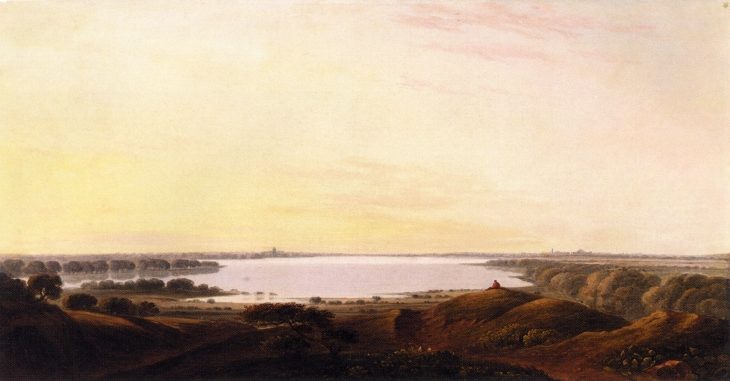
An Extensive River Landscape on the Thames by John Varley
He became friends with other famous artists. William Blake was one of his closest friends. They worked together on a book called “Visionary Heads” in 1819-1820.
Varley also taught many younger artists. Some of his students, like John Linnell, became well-known painters themselves. Despite his success, Varley often faced money problems. He kept working and teaching until his death in 1842.
Artistic Style and Techniques
John Varley was known for his skill with watercolors and his focus on landscapes. He developed new methods that changed how artists used the medium.
Landscape Watercolours
Varley painted many landscapes, often showing mountain and lake views. He liked to paint scenes of the Thames River. His work had a simple style that showed the beauty of nature.
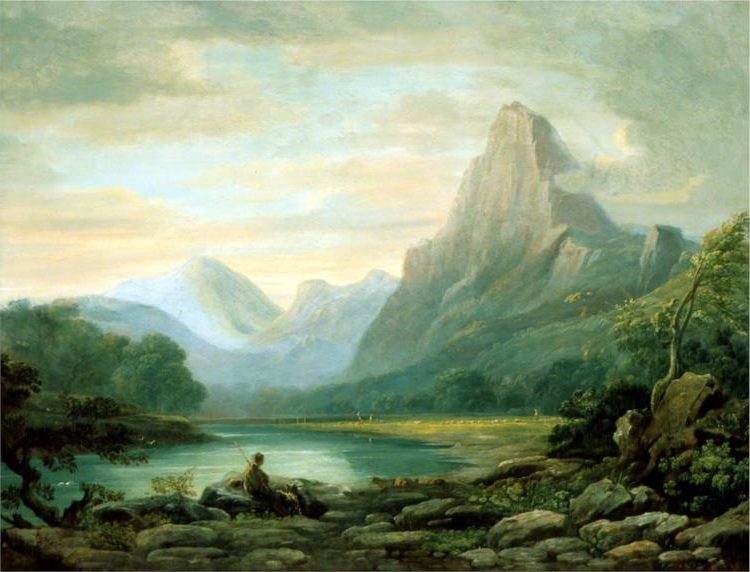
A Welsh Valley by John Varley
Varley used flat washes of watercolor to create smooth areas of color. This gave his paintings a calm, peaceful feeling. He was good at painting skies and water, making them look real and alive.
Many people called Varley the “Turner of Oxford” because his work was as good as the famous painter J.M.W. Turner. Varley’s landscapes often had a poetic quality that made viewers feel like they were there.
Innovations in Watercolour
Varley came up with new ways to use watercolors. He taught artists to use wet paper for some parts of a painting and dry paper for others. This helped create different effects in the same picture.
He also showed how to layer colors to make richer, deeper tones. Varley used a sponge to lift off paint, which made highlights and textures in his work.
His methods helped watercolor become more popular. Many artists learned from Varley’s techniques, which are still used today.
Works and Legacy
John Varley created many notable watercolor paintings and wrote influential art treatises. His work and teachings shaped landscape painting in early 19th-century England.
Notable Works
Varley painted many scenes of Wales and other British landscapes. His 1798 sketch of Peterborough Cathedral was his first work shown at the Royal Academy. He often painted calm rural views with soft colors.
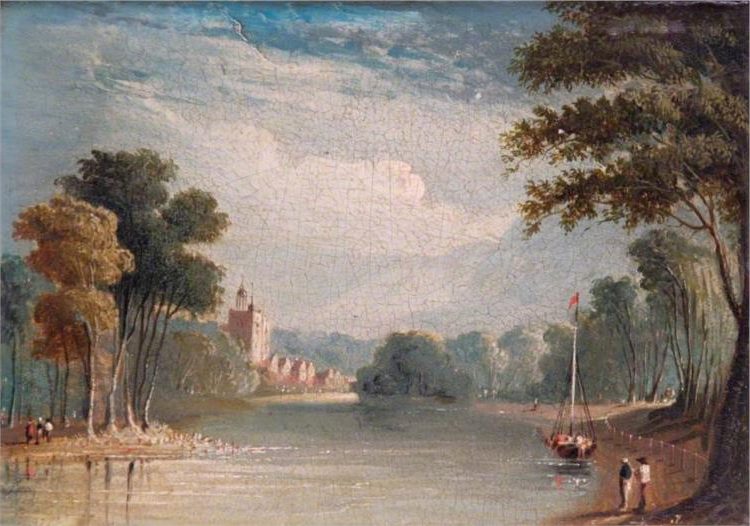
Twickenham Church, Middlesex by John Varley
Varley wrote important books on art techniques. These included “A Treatise on the Principles of Landscape Drawing” and “A Practical Treatise on the Art of Drawing in Perspective.”
He also made “Visionary Heads” with William Blake. This book mixed Varley’s interest in astrology with Blake’s art.
Influence and Recognition
Varley taught many students as a drawing master. His pupils included famous artists like David Cox and Copley Fielding.
He helped form the Society of Painters in Water Colours in 1804. This group raised the status of watercolor painting in England.
Varley’s books on art techniques were widely read. They taught new artists how to paint landscapes and use perspective.
Posthumous Reputation
After his death, Varley was praised in the Dictionary of National Biography. It called him one of the founders of the English school of watercolor painting.
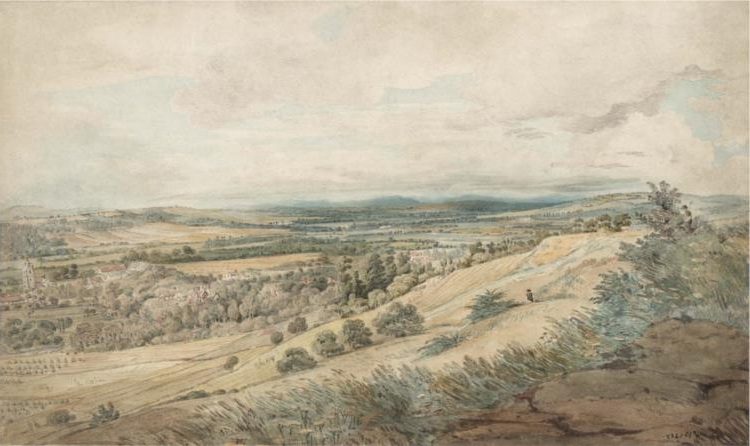
View of Bodenham and the Malvern Hills, Herefordshire, 1801 by John Varley
His work is now in major museums. These include the Yale Center for British Art and Tate Britain.
Varley is listed in the Union List of Artist Names. This shows his lasting place in art history.
He is buried in Kensal Green Cemetery in London. His grave marks him as an important British artist.
Frequently Asked Questions
John Varley was an important English watercolor painter in the early 19th century. He made major contributions to landscape painting techniques and taught many notable students during his career.
What styles and techniques is John Varley known for in his watercolour paintings?
Varley was known for his atmospheric landscapes and townscapes. He used loose, fluid washes to capture light and mood. Varley often painted en plein air (outdoors) to accurately depict nature.
His style blended careful observation with imaginative interpretation. He used transparent layers of paint to create depth and luminosity in his skies and landscapes.
During which historical period did John Varley achieve prominence as an artist?
Varley rose to prominence in the early 19th century during the Romantic era. He was active from around 1798 to 1842. This was a time when watercolor painting was gaining respect as a serious art form in England.
Varley helped establish watercolor as a medium for ambitious landscape paintings. He exhibited regularly at the Royal Academy and other major venues during this period.
Can you list some of the notable students taught by John Varley?
Varley taught many important artists of the next generation. Some of his notable students included:
- William Henry Hunt
- John Linnell
- William Mulready
- David Cox
- Peter De Wint
These artists went on to have successful careers and further develop English landscape painting.
What impact did John Varley have on the development of British landscape painting?
Varley helped popularize outdoor sketching and painting from nature. He encouraged artists to directly observe landscapes rather than work from imagination.
His loose, atmospheric style influenced later Romantic painters. Varley’s teachings shaped a generation of British landscape artists in the early 19th century.
He also wrote instructional books that spread his ideas about painting techniques. This helped establish standards for watercolor landscape painting.
What are some of the most celebrated works by John Varley?
Some of Varley’s well-known paintings include:
- “Kilgerran Castle on the Twyvey”
- “View on the Wye”
- “Tintern Abbey”
- “The Valley of the Mawddach”
- “Windsor Castle from the Thames”
These works showcase his skill at capturing light, atmosphere, and the grandeur of nature.
How did John Varley’s personal life influence his artwork?
Varley’s interest in astrology affected his art. He believed cosmic forces shaped human destiny. This led him to create “astrological portraits” blending art and mysticism.
His friendship with William Blake exposed him to visionary ideas. This may have encouraged the imaginative elements in Varley’s landscapes.
Varley’s frequent travels in Wales and England provided inspiration. The varied scenery he encountered on these trips became subjects for many paintings.


